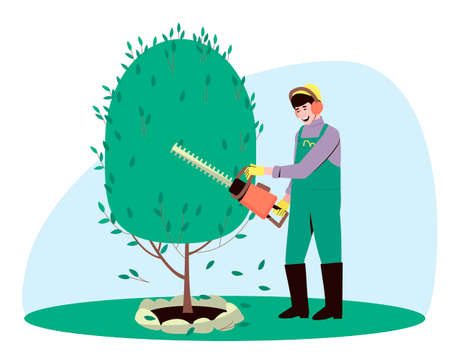1. Understanding Drought-Resistant Landscaping
Drought-resistant landscaping, also known as xeriscaping, is a smart and sustainable way to design your yard—especially in areas where water is limited. This approach focuses on conserving water while still creating a beautiful and functional outdoor space. By learning the basic principles of xeriscaping, you can reduce your water bills, lower maintenance needs, and help protect the environment.
What Is Xeriscaping?
Xeriscaping is a landscaping method that reduces or eliminates the need for supplemental water from irrigation. It involves selecting native or drought-tolerant plants, improving soil quality, using mulch to retain moisture, and designing efficient irrigation systems. This method is especially useful in arid and semi-arid regions like the Southwestern United States, but it can be adapted to almost any climate.
Why Choose Drought-Resistant Landscaping?
Transforming your yard into a drought-resistant landscape offers several benefits:
- Water Conservation: Reduce water use by up to 50% or more compared to traditional lawns.
- Lower Maintenance: Less mowing, trimming, and fertilizing means more free time and fewer expenses.
- Saves Money: Lower water bills and fewer gardening supplies save you money in the long run.
- Sustainable Living: Helps reduce your environmental footprint by using fewer resources.
Reducing Lawn Space
A major principle of xeriscaping is minimizing traditional lawn areas that require heavy watering. Replacing grass with ground covers, gravel, or mulch not only saves water but also adds texture and visual interest to your yard. Here’s a simple comparison between traditional lawns and drought-resistant alternatives:
| Feature | Traditional Lawn | Drought-Resistant Yard |
|---|---|---|
| Water Usage | High | Low |
| Maintenance | Frequent mowing, fertilizing | Minimal upkeep |
| Plant Types | Mainly turfgrass | Native and drought-tolerant plants |
| Environmental Impact | Higher carbon footprint | Sustainable and eco-friendly |
The Big Picture: Sustainability at Home
Drought-resistant landscaping is about working with nature instead of against it. By making thoughtful choices about plant selection, irrigation methods, and yard design, you create a landscape that thrives with less water—and supports local ecosystems at the same time. Whether youre starting from scratch or updating an existing yard, understanding these basics will set you on the right path toward a more sustainable outdoor space.
2. Choosing the Right Native and Drought-Tolerant Plants
When transforming your yard into a drought-resistant landscape, one of the most important steps is selecting plants that naturally thrive in your local climate. These plants can survive with minimal watering once established, making them perfect for low-water gardening. Here’s how to choose the best ones for your yard.
Why Choose Native and Drought-Tolerant Plants?
Native plants have evolved to adapt to local conditions over thousands of years. They require less water, fewer fertilizers, and minimal maintenance compared to non-native species. Pairing native plants with drought-tolerant perennials can create a beautiful and sustainable landscape that supports local wildlife and conserves water.
Tips for Selecting the Right Plants
- Know Your USDA Plant Hardiness Zone: This helps you determine which plants will survive year-round in your region.
- Check Sunlight Requirements: Some drought-tolerant plants love full sun, while others prefer partial shade.
- Select Plants with Similar Water Needs: Grouping them together helps avoid overwatering or underwatering certain areas.
- Look for Deep-Rooted Species: These plants access moisture deeper in the soil, making them more resilient during dry spells.
Examples of U.S.-Native and Drought-Tolerant Plants
| Plant Name | Region | Sunlight | Water Needs |
|---|---|---|---|
| Purple Coneflower (Echinacea purpurea) | Northeast, Midwest | Full Sun | Low |
| California Poppy (Eschscholzia californica) | West Coast | Full Sun | Low |
| Lavender (Lavandula spp.) | Southeast, Southwest | Full Sun | Very Low |
| Muhly Grass (Muhlenbergia capillaris) | Southeast | Full Sun to Partial Shade | Low |
| Nationwide | Full Sun | Moderate to Low |
Caring for Your Drought-Tolerant Garden
Drought-resistant doesn’t mean zero care. During their first growing season, these plants need regular watering until their roots establish well. After that, most will thrive with occasional deep watering. Adding mulch around the base of each plant helps retain soil moisture and suppress weeds.
Avoid Invasive Species
Avoid planting species not native to your area that may become invasive. Always check with your local extension office or native plant society for guidance on what’s safe and beneficial to plant in your region.

3. Improving Soil and Using Mulch Effectively
Creating a drought-resistant yard isn’t just about choosing the right plants—it starts from the ground up. Healthy soil plays a major role in how well your landscape retains water. By improving your soil and using mulch properly, you can cut down on water usage and help your yard thrive even during dry spells.
Prepare Your Soil for Better Water Retention
Good soil structure allows water to soak in rather than run off. Most drought-tolerant plants prefer well-draining soil that still holds enough moisture for roots to access when needed. To improve your soil:
- Add Organic Matter: Mix compost, aged manure, or shredded leaves into your existing soil to boost its ability to retain moisture.
- Avoid Soil Compaction: Loosen compacted areas with a garden fork or aerator to allow air and water to reach plant roots more easily.
- Test Your Soil: Use an at-home soil test kit or contact your local extension service to check pH levels and nutrient content.
The Benefits of Mulching
Mulch is one of the easiest and most effective tools for maintaining a drought-tolerant landscape. It helps reduce evaporation, keeps soil temperatures stable, suppresses weeds, and adds organic matter as it breaks down.
Types of Mulch and Their Benefits
| Type of Mulch | Best For | Benefits |
|---|---|---|
| Bark or Wood Chips | Around trees, shrubs, and perennial beds | Long-lasting, attractive appearance, good weed control |
| Compost or Leaf Mold | Vegetable gardens, flower beds | Nutrient-rich, improves soil structure as it decomposes |
| Straw or Hay (weed-free) | Vegetable gardens | Lightweight, easy to apply, excellent moisture retention |
| Gravel or Rocks | Cactus or succulent gardens, pathways | Doesn’t break down, great for heat-loving plants, low maintenance |
How to Apply Mulch Properly
- Depth Matters: Apply a 2–4 inch layer of mulch around plants. Too little won’t be effective; too much can suffocate roots.
- Avoid the Base: Keep mulch a few inches away from stems and tree trunks to prevent rot and pest issues.
- Refresh Annually: Organic mulches break down over time—replenish them each year to maintain benefits.
Together, healthy soil and well-placed mulch form the foundation of a drought-resilient yard. These simple steps help you conserve water naturally while creating a vibrant outdoor space that’s easier to maintain all year long.
4. Smart Irrigation Techniques
One of the most effective ways to maintain a drought-resistant landscape is by using smart irrigation techniques. Traditional sprinklers often waste water by spraying sidewalks or running during rain. Instead, modern systems help you save water and support healthy plant growth.
Drip Irrigation: Water Where It Counts
Drip irrigation delivers water directly to the base of plants, minimizing evaporation and runoff. Its ideal for gardens, flower beds, and even container plants. With this system, you use less water while giving your plants exactly what they need.
Benefits of Drip Irrigation
| Benefit | Description |
|---|---|
| Water Efficiency | Sends water straight to the roots, reducing waste |
| Healthier Plants | Consistent moisture helps prevent stress and disease |
| Easy Customization | You can adjust emitters for different plant types |
Smart Controllers: Let Technology Do the Work
Smart irrigation controllers adjust watering schedules based on real-time weather data and soil moisture levels. Many models connect to Wi-Fi and can be controlled through a smartphone app, making it easy to manage your yard even when youre not home.
Features of Smart Controllers
| Feature | How It Helps |
|---|---|
| Weather-Based Adjustments | Avoids watering during rain or cool temperatures |
| Zone Control | Customize settings for different areas of your yard |
| Remote Access | Make changes from anywhere with an app |
Tips for Getting Started
- Start small by installing drip irrigation in one area of your yard.
- Choose a smart controller that’s compatible with your current system.
- Check local rebates—many cities offer incentives for switching to efficient irrigation.
By combining drip irrigation and smart controllers, you’ll use less water while keeping your drought-tolerant plants thriving.
5. Incorporating Hardscaping and Functional Design
When it comes to creating a drought-resistant landscape, its not just about choosing the right plants—its also about smart design choices. One of the most effective ways to reduce water usage while still keeping your yard beautiful and functional is by incorporating hardscaping elements.
What Is Hardscaping?
Hardscaping refers to the non-living features in your yard like walkways, patios, stone borders, gravel paths, and decorative rocks. These elements don’t require water and can significantly cut down on the amount of lawn or plantings that need irrigation.
Benefits of Hardscaping
- Reduces water use: Less area covered with grass or thirsty plants means less watering.
- Low maintenance: Unlike lawns or gardens, hardscape areas dont need mowing or pruning.
- Improves usability: Walkways and patios create functional spaces for relaxing and entertaining.
- Enhances curb appeal: Adds structure, texture, and visual interest to your landscape.
Popular Hardscaping Materials
| Material | Description | Best Uses |
|---|---|---|
| Gravel | Affordable and easy to install; allows water to drain through | Pathways, ground cover between plants |
| Pavers | Durable and available in many styles and colors | Patios, walkways, driveways |
| Decorative Rocks | Adds texture and color; helps retain soil moisture when used as mulch | Around plant beds, accent areas |
| Decomposed Granite | A compactable material with a natural look | Paths, sitting areas, borders |
Design Tips for Blending Hardscape with Plantings
- Create contrast: Use different textures and colors between rocks and plants to make each element stand out.
- Add curves: Curved pathways feel more natural and help soften the look of stone-heavy areas.
- Mimic nature: Place rocks and gravel in organic patterns rather than straight lines to keep the design inviting.
- Select drought-tolerant plants: Surround hardscape features with native grasses, succulents, or shrubs that thrive with little water.
Functional Layout Ideas
A well-planned layout ensures every part of your yard serves a purpose while conserving water. Here are some ideas to consider:
- Sitting areas: Use pavers or flagstone to create shaded spots for outdoor furniture.
- Borders: Line garden beds with stones or bricks for a clean edge that prevents water runoff.
- Drought-friendly paths: Lay gravel walkways to guide movement without damaging soil structure or compacting roots.
By thoughtfully combining plant life with hardscape elements like gravel, pavers, and decorative stonework, you can build a stunning yard that’s both functional and eco-friendly. It’s all about finding balance—and making choices that work best for your climate and lifestyle.


